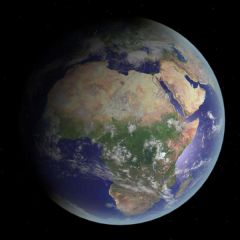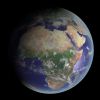Difference between revisions of "Earth"
(Added comment.) |
(Added table items.) |
||
| (20 intermediate revisions by the same user not shown) | |||
| Line 119: | Line 119: | ||
See [[Earth spaceports in Orbiter2016|Listing of ''Earth spaceports in Orbiter2016'']] | See [[Earth spaceports in Orbiter2016|Listing of ''Earth spaceports in Orbiter2016'']] | ||
| + | == Orbiter versions and add-ons which include Earth == | ||
| + | {|class="wikitable sortable” style="text-align: center" | ||
| + | |colspan="8"|<center>'''Orbiter versions and add-ons which include Earth'''</center> | ||
| + | |- | ||
| + | !Add-on!!Source!!Version!!Author!!Type!!Release Date!!Compatibility!!Wiki article | ||
| + | |- | ||
| + | |[https://www.orbiter-forum.com/resources/orbiter-2016-torrent-files.5427/ Orbiter 2016 - torrent files]||O-F Resources||2016||martins||Orbiter Download||23 August 2016||Orbiter 2016|| | ||
| + | |- | ||
| + | |[https://www.orbiter-forum.com/resources/orbiter-2016-core-msi-exe-edition.5426/ Orbiter 2016 Core - MSI / EXE edition]||O-F Resources||2016||martins||Orbiter Download||23 August 2016||Orbiter 2016|| | ||
| + | |- | ||
| + | |[https://www.orbiter-forum.com/resources/orbiter-2016-core-zip-edition.5425/ Orbiter 2016 Core - ZIP edition]||O-F Resources||2016||martins||Orbiter download||23 August 2016||Orbiter 2016|| | ||
| + | |- | ||
| + | |[http://orbit.medphys.ucl.ac.uk/download.html Orbiter core package download]<br>(The actual download page for Orbiter 2016)||Orbiter download page||Orbiter 2016||martins||Orbiter download||23 August 2016||Orbiter 2016|| | ||
| + | |- | ||
| + | |[https://www.orbiter-forum.com/resources/celestial-bodies-motion-part-1-4-v2-0-0.132/ Celestial Bodies Motion - Part 1/4 - v2.0.0]||O-F Resources||v2.0.0||cristiapi||Scenery||2 July 2015||*module only|| | ||
| + | |- | ||
| + | |[https://www.orbiter-forum.com/resources/orbiter-2010-p1.5428/ Orbiter 2010-P1]||O-F Resources||100830||martins||Orbiter Download||30 August 2010||Orbiter 2010-P1|| | ||
| + | |- | ||
| + | |[https://www.orbiter-forum.com/resources/orbiter-2010.5429/ Orbiter 2010]||O-F Resources||100606||martins||Orbiter Download||5 June 2010||Orbiter 2010|| | ||
| + | |- | ||
| + | |[https://www.orbiter-forum.com/resources/orbiter-2006-p1.5430/ Orbiter 2006-P1]||O-F Resources||060929||martins||Orbiter Download||29 September 2006||Orbiter 2006-P1|| | ||
| + | |- | ||
| + | |[https://www.orbiter-forum.com/resources/orbiter-2006.5431/ Orbiter 2006]||O-F Resources||060504||martins||Orbiter Download||4 May 2006||Orbiter 2006|| | ||
| + | |- | ||
| + | |[https://www.orbiter-forum.com/resources/2005-with-p1-patch-files.5432/ 2005 (with P1 patch files)]||O-F Resources||050216||martins||Orbiter Download||16 February 2005||Orbiter 2005|| | ||
| + | |- | ||
| + | |[https://www.orbiter-forum.com/resources/orbiter-2003-p2.5433/ Orbiter 2003-P2]||O-F Resources||031217||martins||Orbiter Download||17 December 2003||Orbiter 2003-P2|| | ||
| + | |- | ||
| + | |[https://www.orbiter-forum.com/resources/orbiter-2003-p1.5434/ Orbiter 2003-P1]||O-F Resources||031105||martins||Orbiter Download||5 November 2003||Orbiter 2003-P1| | ||
| + | |- | ||
| + | |[https://www.orbiter-forum.com/resources/orbiter-2002.5436/ Orbiter 2002]||O-F Resources||020419||martins||Orbiter Download||19 April 2002||Orbiter 2002|| | ||
| + | |- | ||
| + | |[https://www.orbiter-forum.com/resources/orbiter-2001.5437/ Orbiter 2001]||O-F Resources||010503||martins||Orbiter Download||3 May 2001||Orbiter 2001|| | ||
| + | |} | ||
== See also == | == See also == | ||
*[[Spaceport]], a listing of spaceports on the real Earth used to launch rockets and spacecraft. | *[[Spaceport]], a listing of spaceports on the real Earth used to launch rockets and spacecraft. | ||
*[[Earth spaceports in Orbiter2016]] | *[[Earth spaceports in Orbiter2016]] | ||
| − | *[[:Category:Add-ons for Earth|Addons for Earth]] | + | *[[:Category:Add-ons for Earth|Category:Addons for Earth]] |
*[[w:Earth|Earth]] at Wikipedia | *[[w:Earth|Earth]] at Wikipedia | ||
| Line 130: | Line 164: | ||
===Gallery=== | ===Gallery=== | ||
| − | <gallery widths=" | + | <gallery widths="100" heights="100"> |
| − | The Earth seen from Apollo 17.jpg|The Earth seen from Apollo 17.<br>From Wikimedia Commons. | + | EarthOrbiter2001.jpg|<center>Earth in Orbiter 2001</center> |
| − | EpicEarth-Globespin-tilt-23.4.gif|Rotation of the Earth at 23.4° | + | EarthOrbiter2002.jpg|<center>Earth in Orbiter 2002</center> |
| − | + | Earth-orbiter2002p3.jpg|<center>Earth in Orbiter 2002P3</center> | |
| + | Earth-orbiter2003P2.jpg|<center>Earth in Orbiter 2003P2</center> | ||
| + | Earth-Orbiter2005P1.jpg|<center>Earth in Orbiter 2005P1</center> | ||
| + | Earth-Orbiter2006P1.jpg|<center>Earth in Orbiter 2006P1</center> | ||
| + | Earth-Orbiter2010P1-Orbiter2010P1.jpg|<center>Earth in Orbiter 2010P1</center> | ||
| + | EarthScrshot.jpg|<center>Earth in Orbiter 2016 with D3D9</center> | ||
| + | The Earth seen from Apollo 17.jpg|<center>The Earth seen from Apollo 17.<br>From Wikimedia Commons.</center> | ||
| + | EpicEarth-Globespin-tilt-23.4.gif|<center>Rotation of the Earth at 23.4°<br>From Wikimedia Commons</center> | ||
</gallery> | </gallery> | ||
| − | + | [[Category: Articles]] | |
[[Category:Celestial bodies]] | [[Category:Celestial bodies]] | ||
| − | |||
| − | |||
[[Category:Solar System]] | [[Category:Solar System]] | ||
[[Category: Planets]] | [[Category: Planets]] | ||
Latest revision as of 03:10, 12 November 2024
Earth is the third planet from the Sun and is the only body known to have life. It is one of the four 'rocky' planets, the others are Mercury, Venus, and Mars. The Moon is the only natural satellite orbiting the earth.
The Earth is close to an oblate spheroid, but, in Orbiter it's modeled as a sphere, its mean diameter is 6371.01 km, but gravitational calculations include the J coefficients given in the table to the right. The sidereal day is 86164.092 seconds, the obliquity is 23.439291°.
Earth is one of the twelve original bodies in Orbiter since the earliest known version. Its orbit was defined in the Earth.cfg file in Orbiter 2001 and Orbiter 2002, but was later defined in the Vsop87.dll file beginning with Orbiter 2002-P1.
Orbital characteristics[edit]
Earth is the third planet from the Sun, after Mercury and Venus, with a semimajor axis in Orbiter of about 1.49598×1011 km, and an orbital eccentricity of about 0.0167, and an inclination of 0.00005° (0.00000087 radian).
Physical characteristics[edit]
The Earth is modeled in Orbiter as a sphere 6371.01 km in radius with a mass of about 5.974×1024 kg. The Sidereal rotation period is just under 24 hours. At the surface the acceleration due to gravity is 9.78 m/s2</sup, and the Escape velocity|escape velocity]] is 11.186 km/s.
Geological features[edit]
In Orbiter 2016, Earth is modeled as a sphere with elevations approximating the elevations on the real Earth, including sea level. Included in the stock version are files for Antartic Stations, Cities, Impact Features Islands, Mountains and volcanos, Tracking Stations, and some miscellaneous features. Files are located in your Orbiter\Config\Earth\Marker directory.
Natural satellites[edit]
Spaceports[edit]
The stock Orbiter includes 35 bases, some of which include details such as runways, landing pads, buildings, etc, some only include a marker to depict its location.
See Listing of Earth spaceports in Orbiter2016
Orbiter versions and add-ons which include Earth[edit]
| Add-on | Source | Version | Author | Type | Release Date | Compatibility | Wiki article |
|---|---|---|---|---|---|---|---|
| Orbiter 2016 - torrent files | O-F Resources | 2016 | martins | Orbiter Download | 23 August 2016 | Orbiter 2016 | |
| Orbiter 2016 Core - MSI / EXE edition | O-F Resources | 2016 | martins | Orbiter Download | 23 August 2016 | Orbiter 2016 | |
| Orbiter 2016 Core - ZIP edition | O-F Resources | 2016 | martins | Orbiter download | 23 August 2016 | Orbiter 2016 | |
| Orbiter core package download (The actual download page for Orbiter 2016) |
Orbiter download page | Orbiter 2016 | martins | Orbiter download | 23 August 2016 | Orbiter 2016 | |
| Celestial Bodies Motion - Part 1/4 - v2.0.0 | O-F Resources | v2.0.0 | cristiapi | Scenery | 2 July 2015 | *module only | |
| Orbiter 2010-P1 | O-F Resources | 100830 | martins | Orbiter Download | 30 August 2010 | Orbiter 2010-P1 | |
| Orbiter 2010 | O-F Resources | 100606 | martins | Orbiter Download | 5 June 2010 | Orbiter 2010 | |
| Orbiter 2006-P1 | O-F Resources | 060929 | martins | Orbiter Download | 29 September 2006 | Orbiter 2006-P1 | |
| Orbiter 2006 | O-F Resources | 060504 | martins | Orbiter Download | 4 May 2006 | Orbiter 2006 | |
| 2005 (with P1 patch files) | O-F Resources | 050216 | martins | Orbiter Download | 16 February 2005 | Orbiter 2005 | |
| Orbiter 2003-P2 | O-F Resources | 031217 | martins | Orbiter Download | 17 December 2003 | Orbiter 2003-P2 | |
| Orbiter 2003-P1 | O-F Resources | 031105 | martins | Orbiter Download | 5 November 2003 | ||
| Orbiter 2002 | O-F Resources | 020419 | martins | Orbiter Download | 19 April 2002 | Orbiter 2002 | |
| Orbiter 2001 | O-F Resources | 010503 | martins | Orbiter Download | 3 May 2001 | Orbiter 2001 | |
See also[edit]
- Spaceport, a listing of spaceports on the real Earth used to launch rockets and spacecraft.
- Earth spaceports in Orbiter2016
- Category:Addons for Earth
- Earth at Wikipedia
External links[edit]
Earth at Wikipedia
Gallery[edit]
| edit The Solar System | |
|---|---|
| Central star |
Sun (Sol) |
| Planets |
Mercury - Venus - Earth - Mars - Jupiter - Saturn - Uranus - Neptune |
| Natural satellites |
Moon - Phobos - Deimos - Io - Europa - Ganymede - Titan - more... |
| Add-ons |
Planets - Dwarf Planets - Small objects - Natural satellites - Alternative star systems |
 | This article, about a planet, is a stub. You can help Orbiterwiki by expanding it.
|










